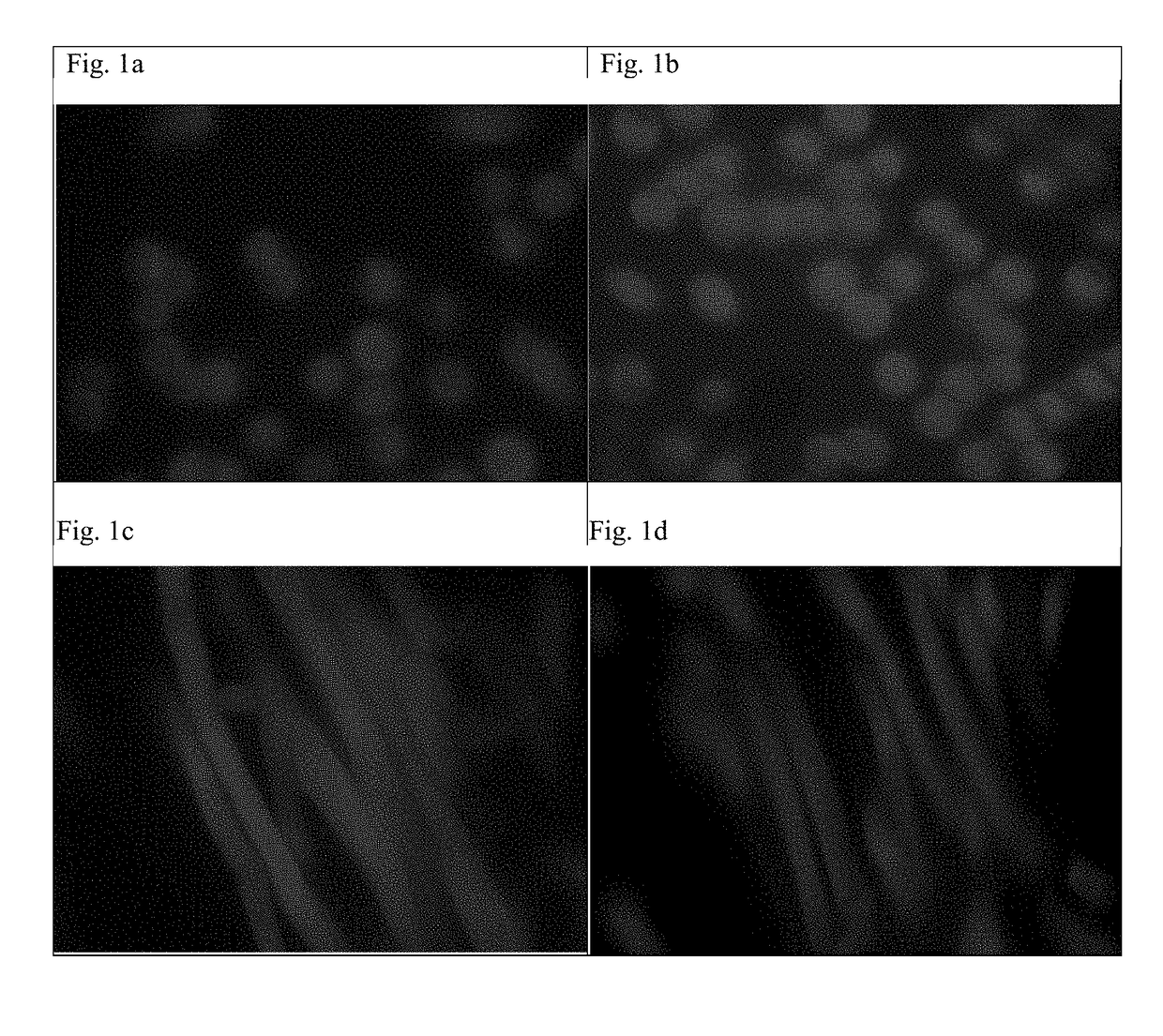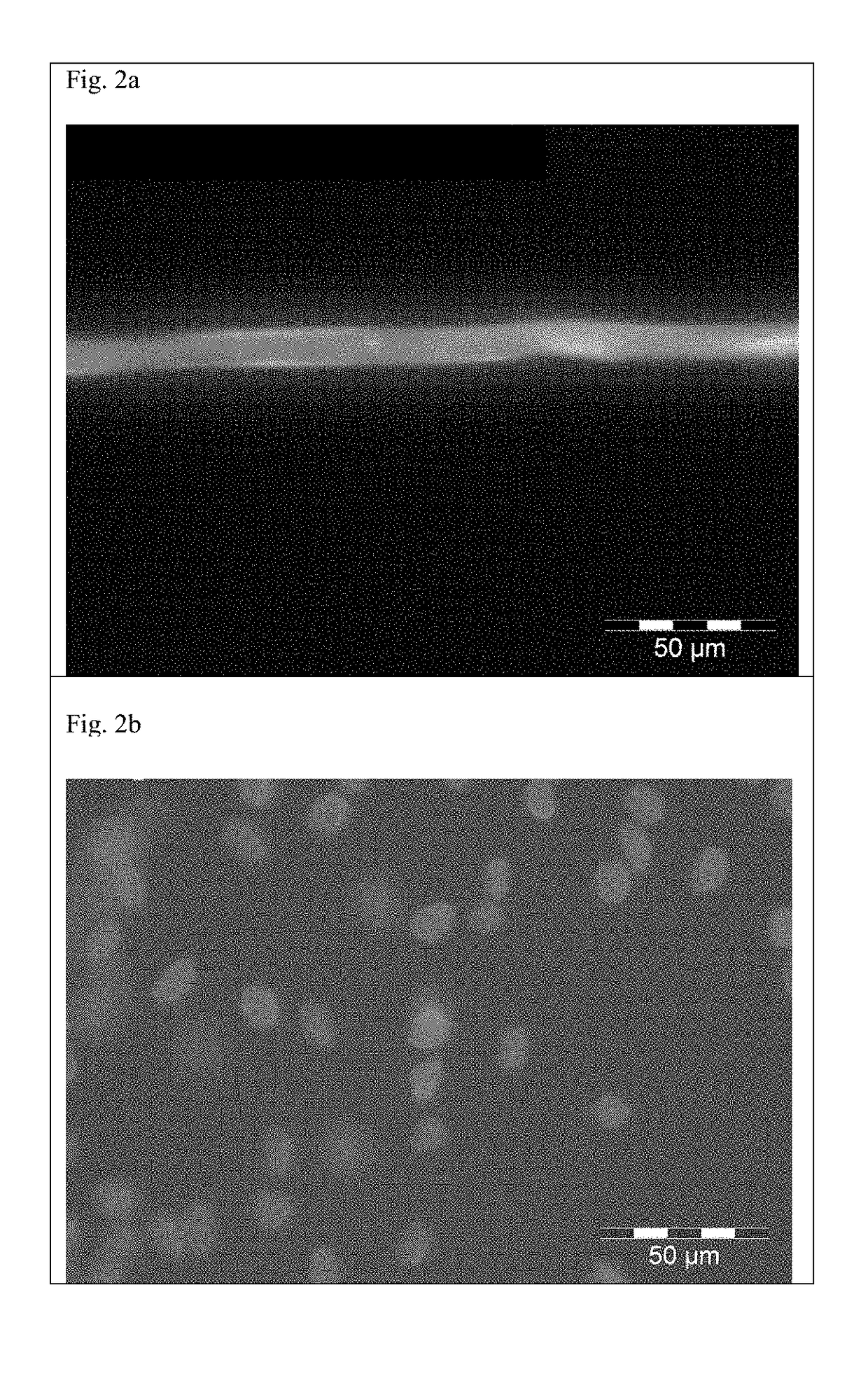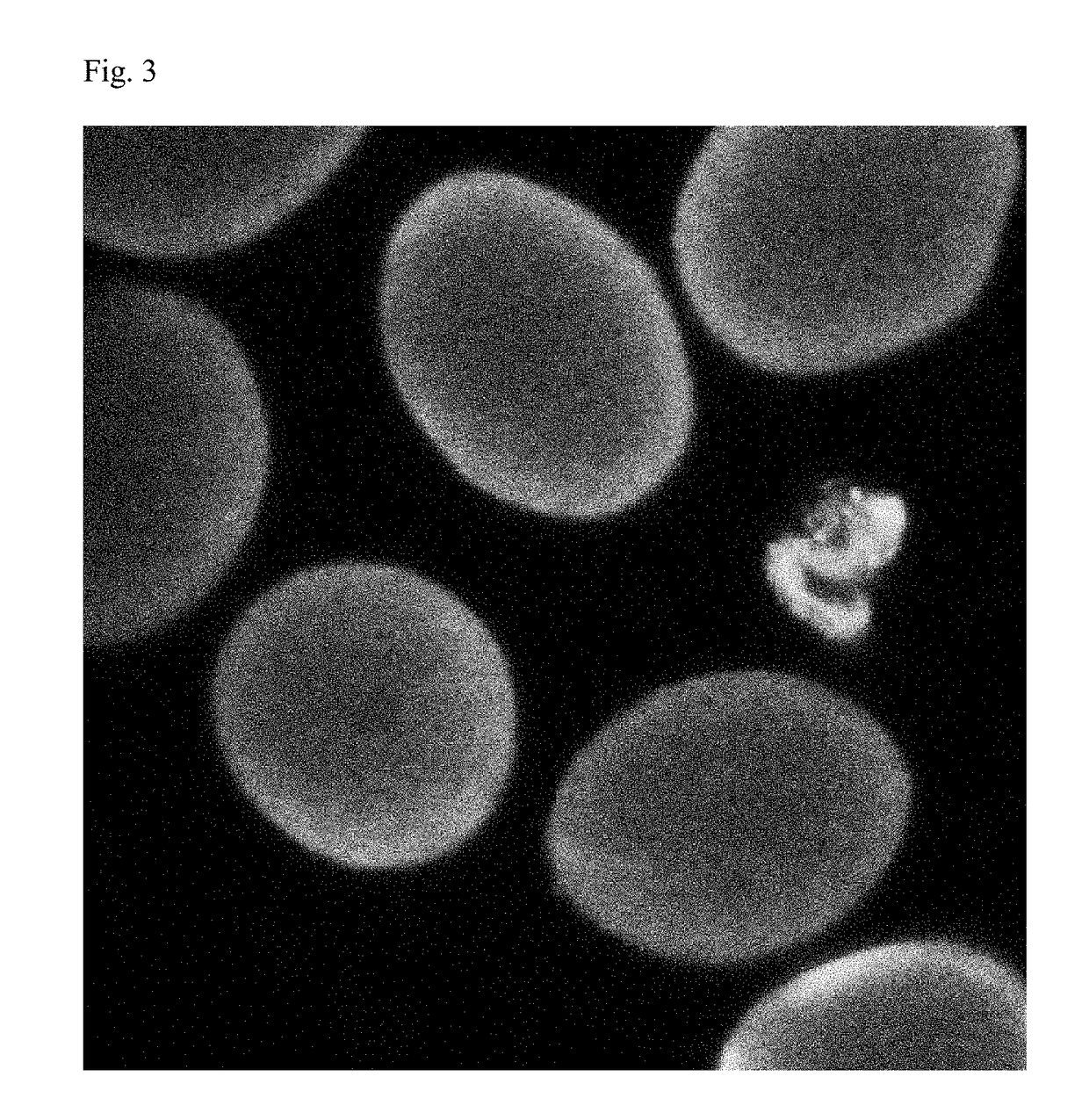Functionalized molded cellulose body and method for producing the same
a technology of molded cellulose and body, which is applied in the direction of vegetal fibres, biochemical treatment with wool protection/anti-moth agents, dyeing process, etc., can solve the problems of reducing the yield of cellulose, and reducing the tendency of fibrillation
- Summary
- Abstract
- Description
- Claims
- Application Information
AI Technical Summary
Benefits of technology
Problems solved by technology
Method used
Image
Examples
example 1
[0123]Wool wax alcohol is a hydrolysis product of lanolin (wool wax), which contains the alcohols of wool wax in pure form. The fatty acids, with which the native wool wax is esterified, are largely separated in the process during the production. As a result, the product is particularly durable and resistant against hydraulic cleavage. The batch of wool wax alcohol (Lanowax EP, Company Parmentier, Frankfurt, DE) had the following properties: melting temperature 66° C.; saponification number 2.3 mg KOH / kg; acid number 0.97 mg KOH / g; cholesterol 31.4%; and ash 0.05%. According to the prospectus of the manufacturer, the composition of wool wax alcohols of pharmaceutical quality is as follows (average values): lanosterol and dihydrolanosterol: 44.2%, cholesterol: 32.5%; aliphatic alcohol: 14.7%; aliphatic diols: 3.2%; hydrocarbons: 0.9%; and unidentified: 4.5%.
[0124]50 g dry weight of a never dried Lyocell fiber with a titer of 1.3 dtex or 6.7 dtex were treated, with...
example 2
f polyDADMAC
[0127]Cationized fibers are produced, for example, as a filtration means. Cationic functions on cellulose fibers enable additional dyeing processes, which are not successful on pure cellulose, for example, dyeing with acidic wool dyes.
[0128]The cationic polymer polyDADMAC (poly(diallyldimethylammonium chloride), Sigma Product No. 522 376, extra low molecular weight, MW<100,000, impregnation efficiency K′=1.4 for never dried Lyocell, K′=1.14 for dried Lyocell, K′=0.87 or 0.75 for never dried or dried viscose) was applied in a 1% aqueous solution to never dried fibers, dried fibers, and knitted fabrics by impregnation (for 15 min), compressing in the padding machine at 1 bar, 10 min treatment with steam at 100° C. in saturated steam, drying for 4 hours at 105° C. The resulting fibers were then brightened (avivage B 306, diluted 1:3, LR 1:20), dried, carded, spun into yarn, and knitted.
[0129]A mild alkaline preliminary wash was carried out on the knitted fabrics.
[0130]For t...
example 3
f Oils and Fats after Solvent Exchange
PUM
| Property | Measurement | Unit |
|---|---|---|
| temperatures | aaaaa | aaaaa |
| temperature | aaaaa | aaaaa |
| temperatures | aaaaa | aaaaa |
Abstract
Description
Claims
Application Information
 Login to View More
Login to View More - R&D
- Intellectual Property
- Life Sciences
- Materials
- Tech Scout
- Unparalleled Data Quality
- Higher Quality Content
- 60% Fewer Hallucinations
Browse by: Latest US Patents, China's latest patents, Technical Efficacy Thesaurus, Application Domain, Technology Topic, Popular Technical Reports.
© 2025 PatSnap. All rights reserved.Legal|Privacy policy|Modern Slavery Act Transparency Statement|Sitemap|About US| Contact US: help@patsnap.com



